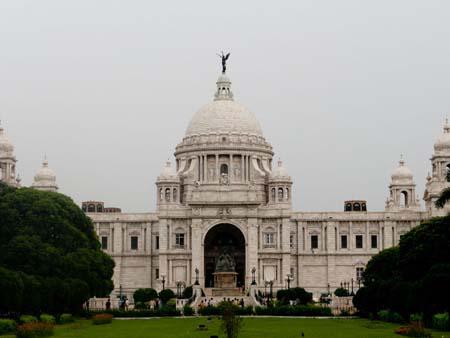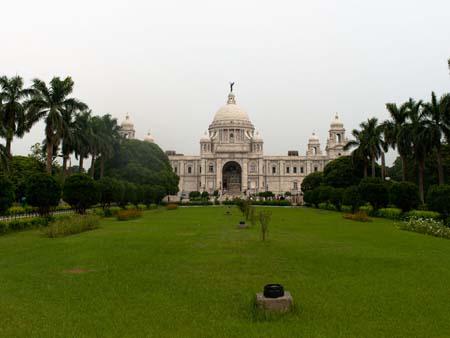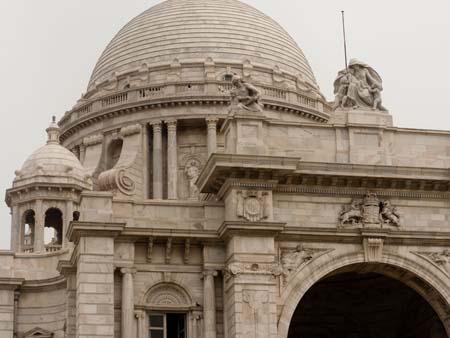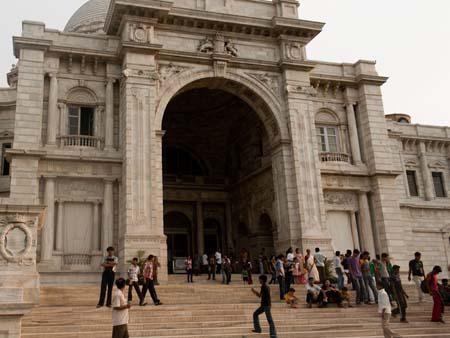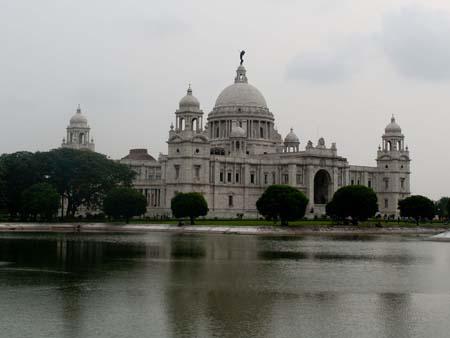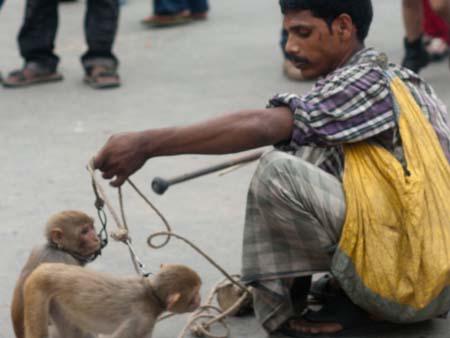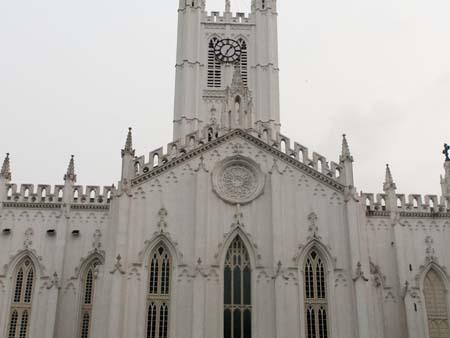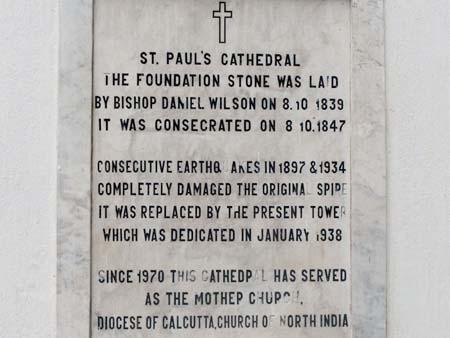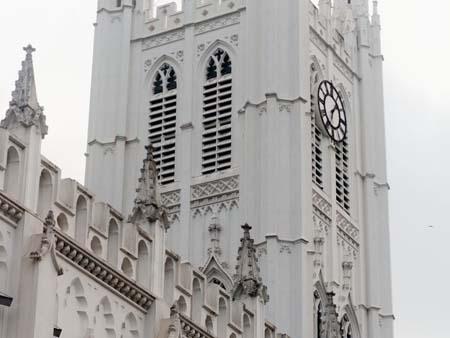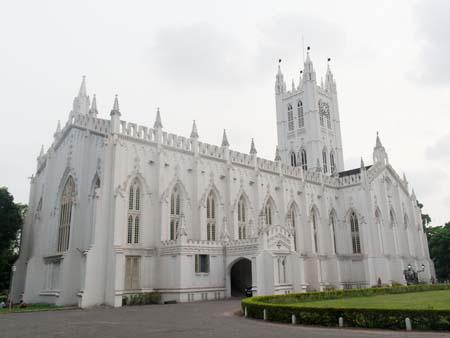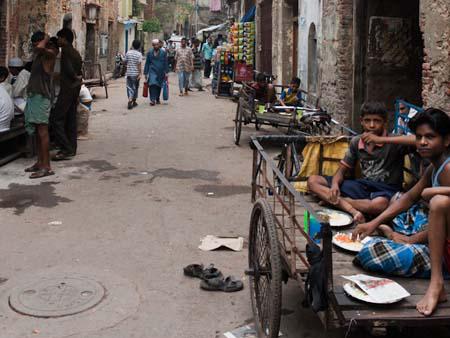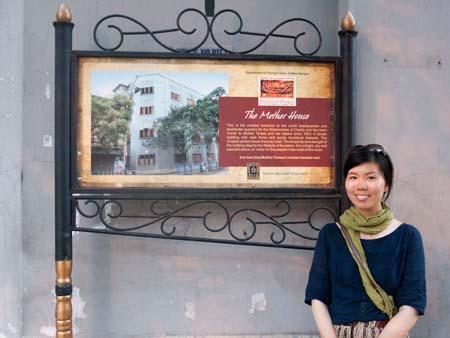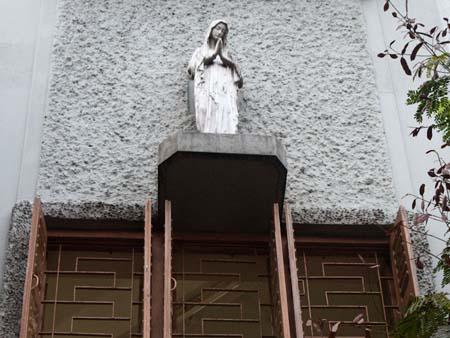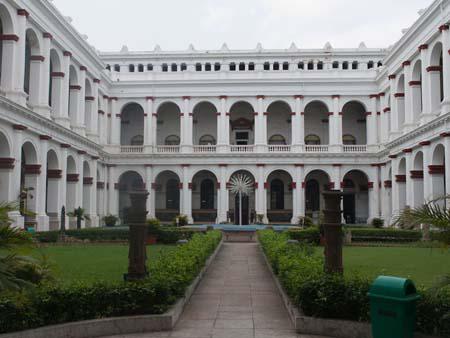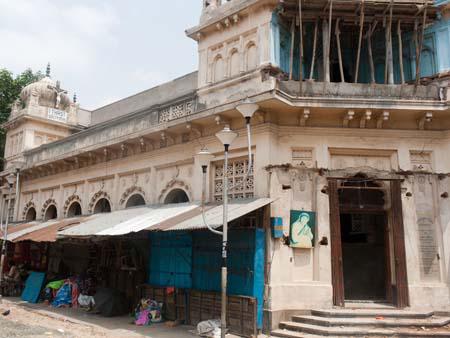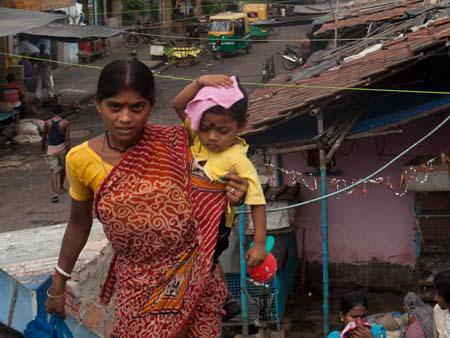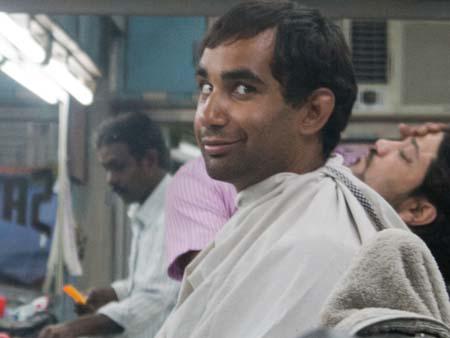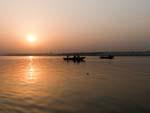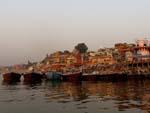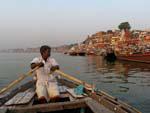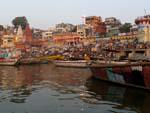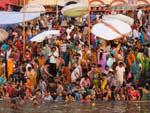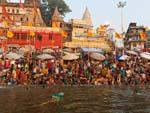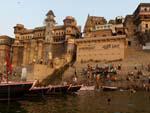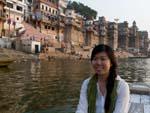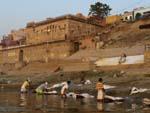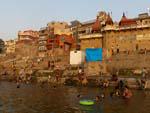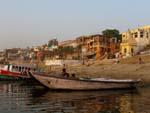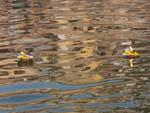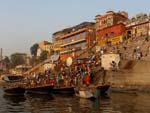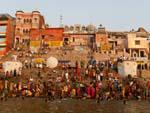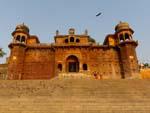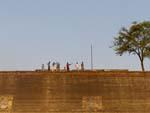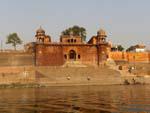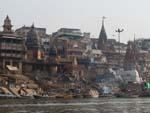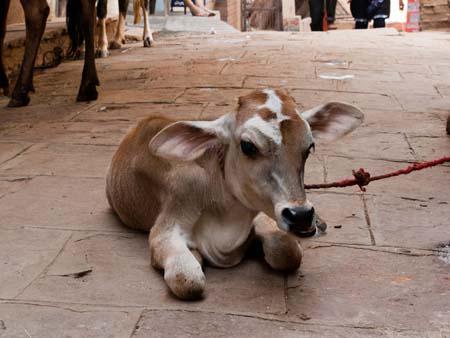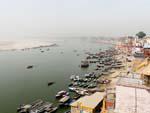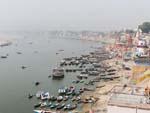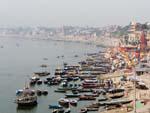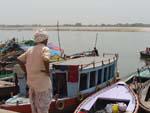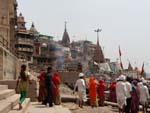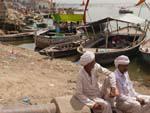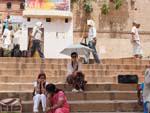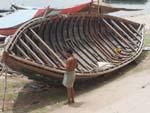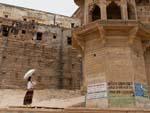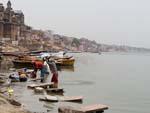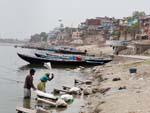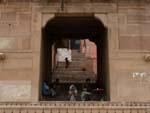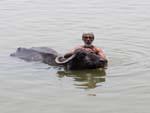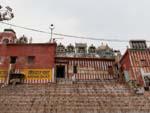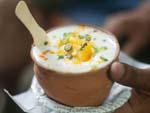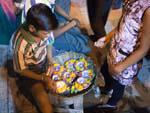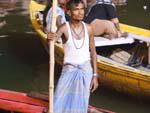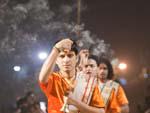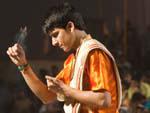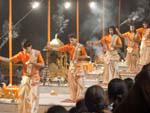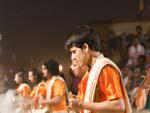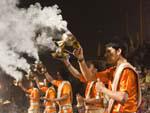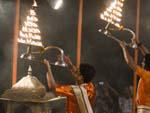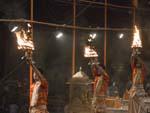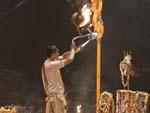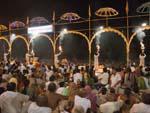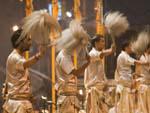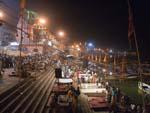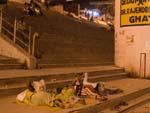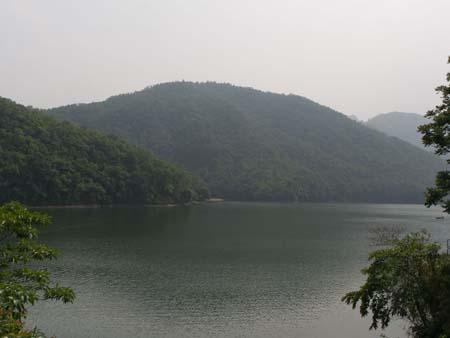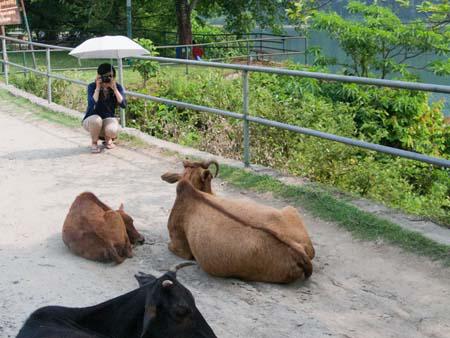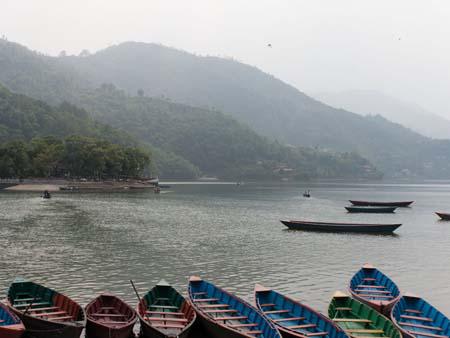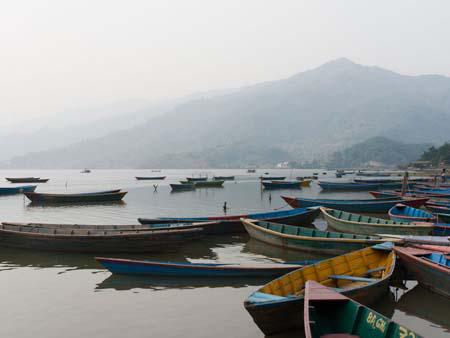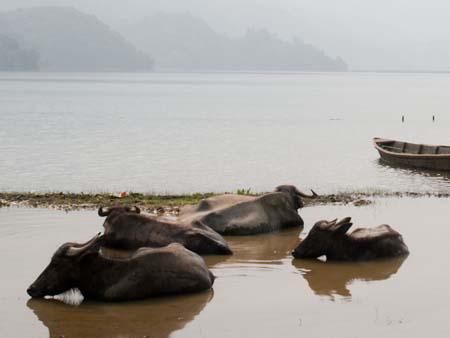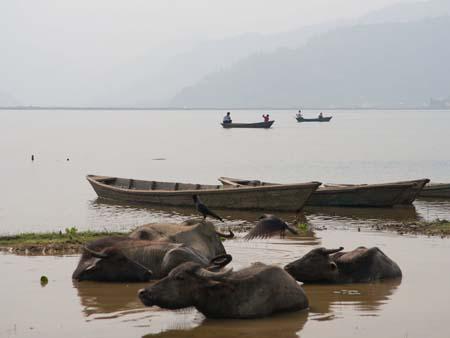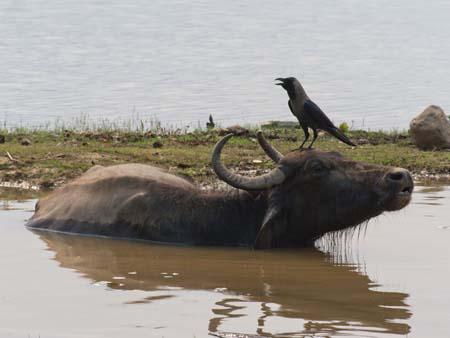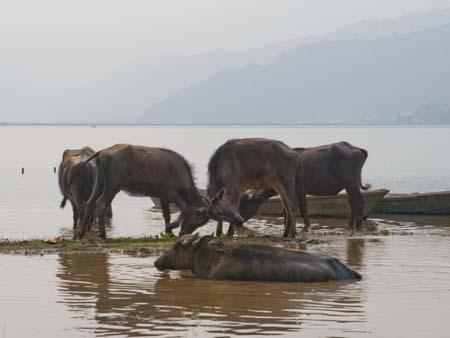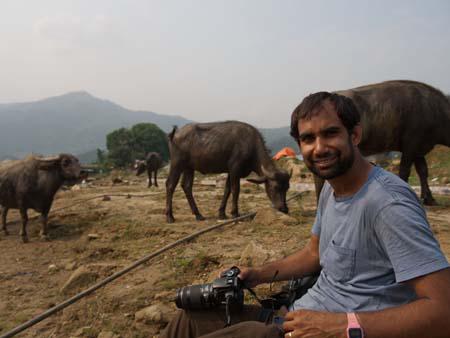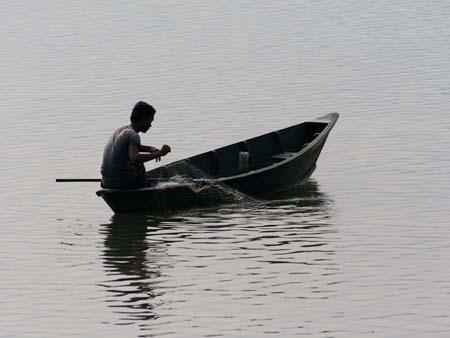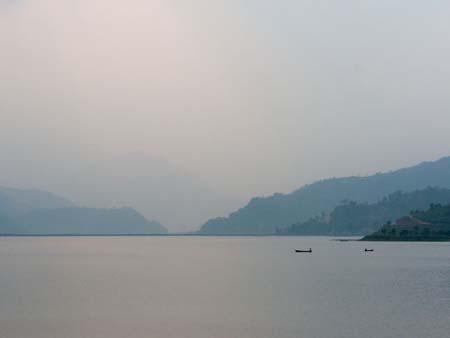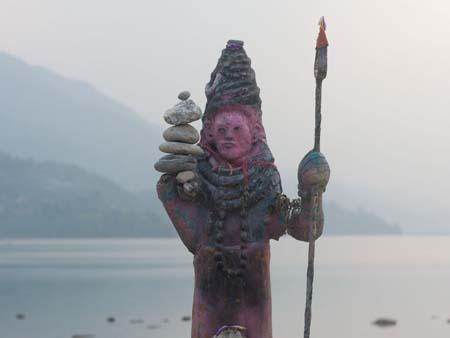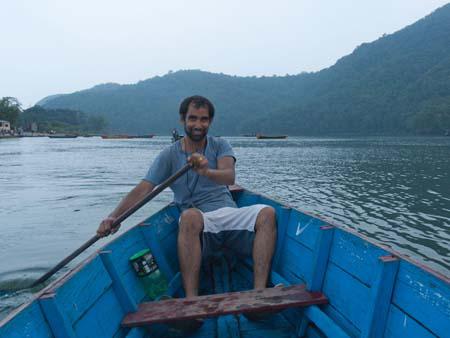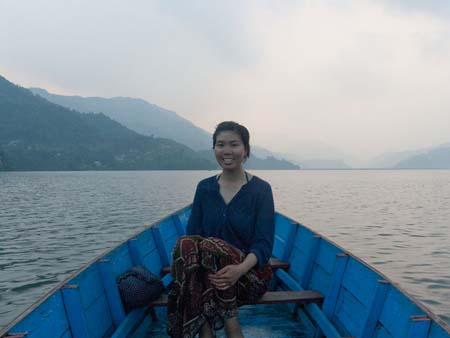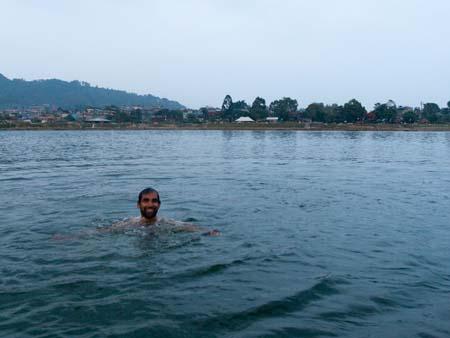After a hot and uncomfortable overnight train, we arrived in India’s famous Calcutta. It was a first visit for both of us, and a particularly special one for Travis being the home town of his mum, my mother in law.
We left the station and immediately noticed the colonial looking, bright yellow taxis, named the “Ambassador”. These metered taxis were quite a change of sight for us, given most of the other Indian cities were filled with green and yellow auto-rickshaws (tuk tuks). We waited in the taxi line for ages (over an hour) due to an inefficient taxi system. It was so hot.
We eventually caught a taxi to Sutton Street and found the cheapest hotel which fortunately had aircon (though it was the size of a shoebox).
We had lunch at a delicious Bengali restaurant, I had a fish curry and Travis a prawn (chingri) curry.
Our afternoon was spent wandering around the area, the streets were clean and modern filled with tropical trees and greenery (except for the group of pigs and piglets rummaging around the rubbish near Sutton Street), quite different to what I had envisaged. We past Fort William and found ourselves at the Victoria Memorial, a beautiful white stone building built in honour of Queen Victoria, Queen of England and Empress of India. The gardens surrounding the area are spectacular and well maintained. We spent some time in the museum which had a really interesting exhibition on Calcutta’s history, from the arrival of the East India Company and the impact of the British rule. It gave us insight into what life would have been like during those times.
After, we headed to St Paul’s Cathedral, a striking Gothic style Anglican cathedral, admiring its beautiful architecture before heading back to Sutton Street, passing the Birla Planetarium along the way.
We had more yummy Bengali cuisine in the evening before heading back.
The next morning we decided to do a walking tour of Calcutta. We started from Sutton Street and walked all the way to BBD Bagh (Dalhousie Square), passing St Johns church along the way. The walk was really enjoyable, allowing us to soak in the streets of Calcutta. I particularly enjoyed passing the street food stalls. We stopped for breakfast (puri and potato dahl for six rupee each!), later along the walk we had coconut juice straight from the coconut (and once we finished ate the coconut flesh from the shell!), I also tried an dish of white delicious looking dessert-like balls which turned out to be something called Doi Bora an Indian chaat (savoury snack), prepared by soaking vadas (fritter balls) in thick yoghurt. It also had spices on top. Admittedly I was a little surprised by the taste of this snack and was struggling to finish it as it was just so unusual but I did anyway as the street vendor and a few of the customers were watching me to see if I liked it or not (to which I politely said yes).
The walk brought us to the following sights, High Court, Calcutta Town Hall Building, the Writers’ Building, Standard Buildings, Standard Chartered Building and St Andrew’s Church where we went inside and had a rest from the hustle and bustle of the city. As we were travelling during pre-monsoon, one of the advantages were the bountiful supply of tropical fruits. We bought a few huge mangoes for thirty rupees each and a kilo of lychees for sizty rupee (a little over a dollar).
We then walked towards the Bara Bazaar area and Old Chinatown. This area was quite a contrast to the Victoria Memorial area we had visited the day before. Old and run-down, poverty was very apparent. Lots of make-do shacks made from all sorts of materials littered the streets. Remnants of the old Chinatown were still apparent – red doors scrawled with Chinese writing, however most of the area is now occupied by a Muslim population.
Next we decided to visit the Mother Teresa House, home to many nuns from her Missions of Charity. The house had a really comprehensive museum depicting her life and charitable work. It displayed many of her own items including her sandals, blanket, chair. Next to the museum was her tomb and when we visited, a mass was being held. It was a moving experience.
The following day, our last day in Calcutta, we headed to the National Museum a very old musty building and spent a few hours there before heading to Kalighat, in Southern Kolkata. Here we saw Nirmal Hriday (Home for the dying) which was the original hospice Mother Teresa established for the destitute and sick. It is now run-down and no longer used. Nearby is the Kali Temple which known to be one of Kolkata’s holiest Hindu spots. It was packed with pilgrims. As we entered the Temple area, I noticed two adorable baby goats tied to a bench. As I played with them, one of the men told me they were to be sacrificed shortly! We walked around and saw the place of sacrifice (where other goats were being slaughtered). The experience was so very raw. Travis went inside the temple itself while I waited around outside.
We then headed to Shanagar Burning Ghat, then had lunch at a local Bengali cuisine restaurant in South Kolkata. That evening we said our farewells to this wonderful, historical city before departing a train to our next stop, Khajuraho.




































































































